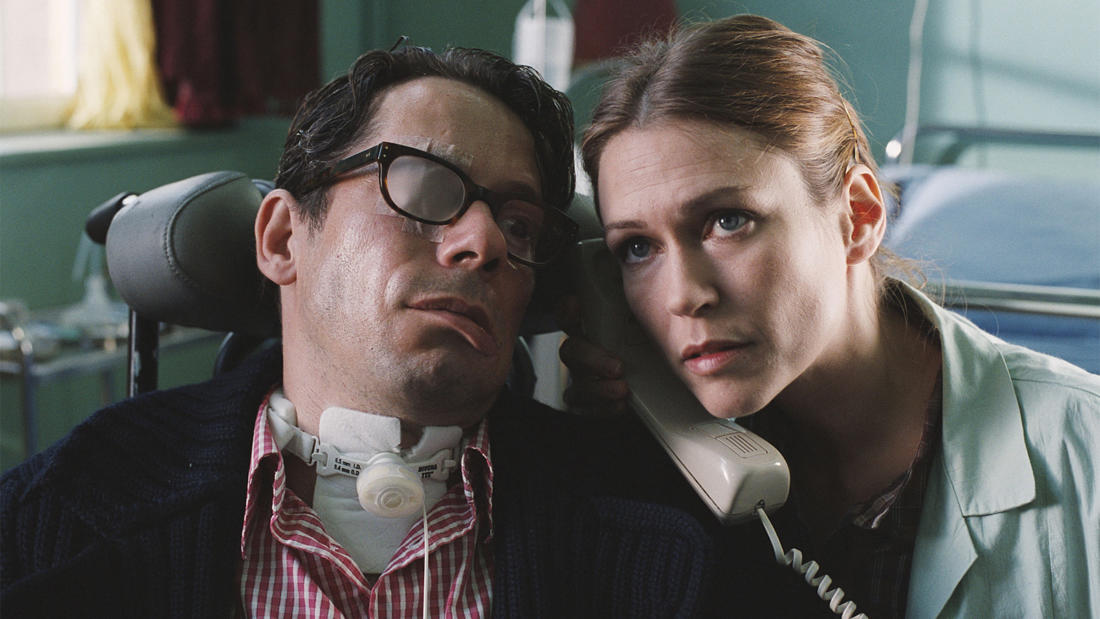
Amherst Cinema Amherst, MA
Dr. Kyle Cave
Neuroscientist, UMass Amherst
andDr. David Moorman
Neuroscientist, UMass Amherst
The Diving Bell and the Butterfly— How does new technology measure brain activity?
Program Description
A discussion of recent research that may lead to new insights in communicating with patients with Locked-in Syndrome.
Presented At
Amherst Cinema Amherst, MA
Film Synopsis
The true story of Elle editor Jean-Dominique Bauby who suffers a stroke and has to live with an almost totally paralyzed body; only his left eye isn't paralyzed.
Jean-Dominique Bauby (Mathieu Amalric), editor-in-chief of French fashion magazine Elle, has a devastating stroke at age 43. The damage to his brain stem results in locked-in syndrome, with which he is almost completely paralyzed and only able to communicate by blinking an eye. Bauby painstakingly dictates his memoir via the only means of expression left to him. Though trapped in his body, Bauby is still able to escape his "diving bell" by letting his imagination take flight like a butterfly. Artist and filmmaker Julian Schnabel won the Best Director award at the 2007 Cannes Film Festival for this fiercely beautiful, quietly moving adaptation of Jean-Dominique Bauby's remarkable memoir.
About the Speaker
Dr. Kyle Cave is a professor in the Department of Psychological and Brain Sciences and in the Neuroscience and Behavior program at UMass Amherst. His research is in visual cognition and attention. Before coming to UMass, Dr. Cave was in the Department of Psychology at the University of Southampton in the UK, and he continues to work with researchers there. He currently teaches graduate and undergraduate courses in cognition and cognitive neuroscience.
Dr. David Moorman is an assistant professor in the Department of Psychological and Brain Sciences and the Neuroscience and Behavior program at the University of Massachusetts Amherst. He received his PhD in the Department of Neuroscience and the Center for the Neural Basis of Cognition at the University of Pittsburgh (working with Carl Olson). He was a postdoctoral fellow at the University of Pennsylvania (working with Laura Peoples) and the Medical University of South Carolina (working with Gary Aston-Jones), where he stayed on as a research assistant professor until 2013. In his position at UMass Amherst, he works with a team of scientists to investigate neural systems underlying motivation, learning, and decision-making.